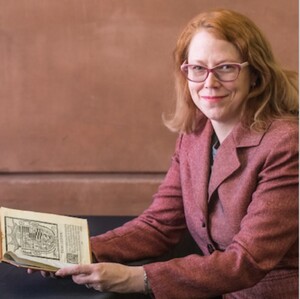
During my month at Sichuan University, I learned about the storage and conservation practices for the Sichuan University’s Special Collections materials. For preservation many of the medieval materials are stored in custom built cedar chests that impede insects from eating the ancient paper. The collections include correspondence, poetry and government documents.
In the conservation lab, I learned that the restoration of a book can take up to a year depending on its condition. Early manuscripts were written on fragile rice paper that was later pasted onto sturdier rice paper that was then bound into books.


To my delight, I was able to see the full copy of the translation of the Buddhist scroll known as the Heart Sutra, one of the books of the Prajñāpāramitāhṛdaya, which was copied during the Tang Dynasty (618-907). The Heart Sutra is better known as a guide to contemplation.[ii]

A few weeks into my stay, I was invited by Dr. Marisol Shi Wei from the Spanish Department to give a presentation and meet the students that are studying in the Latin American Studies Center at Sichuan University on the Jiangan campus. My talk, “Latin American Literature in International Archives,” focused on the manuscripts from Latin America that are accessible online. The students at the center do not have access to an extensive library of Latin American print resources and therefore digitized online resources help the students to access primary sources no matter where they are in the world.[iii]

[i] Karl Brunnhölzl, “The Heart Sutra Will Change You Forever,” Lion’s Roar, September 29, 2017. https://www.lionsroar.com/the-heart-sutra-will-change-you-forever/
[ii] Mi Chu Wiens, “Living Pictographs Asian Scholar Unlocks Secrets of the Naxi Manuscripts,” Library of Congress Information Bulletin, June 1999. https://www.loc.gov/loc/lcib/9906/naxi1.html
[iii] Seonaid Valiant, “How to find Online Resources regarding Codices and Colonial Latin American Documents,” 2018. https://libguides.asu.edu/ColonialLatinAmerica-Codices-Docs